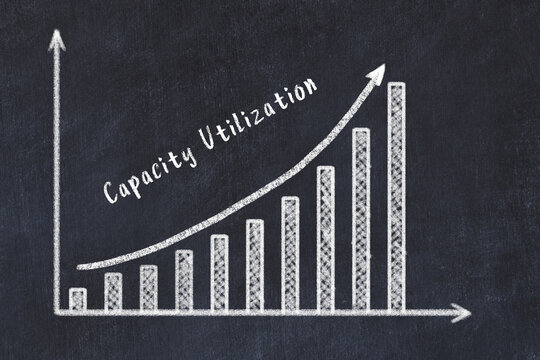
To understand the vitality of your business operations, understanding capacity utilization is incredibly important. It’s an excellent indicator of how efficiently your business uses its resources. In this post, we’ll delve into what capacity utilization business profit , explore practical examples from different industries, and understand the significance of economic analysis.
Understanding Capacity Utilization in Business Operations
It is the proportion of potential economic output that is actually realized. It’s a measure of how effectively businesses are using their productive capacity. Usually expressed as a percentage, it indicates how close a business is to its production maximum.
The calculation for capacity utilization is simple: Divide actual output by potential output and multiply by a hundred. But understanding what these numbers mean in your specific circumstances requires more complexity. Various factors such as operating efficiency, market demand, and managerial decisions significantly impact capacity utilization.
A deep understanding of capacity utilization can yield vital insights about the business infrastructure, its efficiency, and potential growth. A high capacity utilization indicates maximum efficiency of resources and robust demand. On the other hand, having consistently low capacity utilization may hint at overinvestment in resources or weaker market demand.
However, neither extremely high nor low capacity utilization is ideal. You can learn more about these scenarios through capacity utilization business profit.
Real-World Example of Capacity Utilization in Manufacturing
Consider a car manufacturing plant that can produce 200 vehicles per month. However, due to varying factors, they are only producing 150 cars a month. Here, the capacity utilization of the plant would be 75 percent. Analyzing these figures over time can help managers identify trends and adjust their strategy accordingly.
Capacity utilization rates in manufacturing play a crucial role in many business decisions like pricing, scaling, and investment in machinery and human resources. These decisions directly impact the firm’s profitability and competitiveness in the market.
Remember, a highly efficient manufacturer isn’t necessarily superior. If it has high capacity utilization due to scaled-down operations, that means its potential to respond to increasing demand is limited. In contrast, a business with lower capacity utilization may be in a better position to ramp up production quickly when the demand surges.
How the Service Industry Measures Capacity Utilization – A Case Study
In the service sector, processes aren’t as straightforward as in manufacturing, and measuring capacity utilization can be complex. The capacity in service industries is often measured in terms of time or space. For example, the number of tables in a restaurant, the number of hotel rooms, or the hours available for consultations in a clinic.
Consider a hotel with 100 rooms, having an occupancy of 75 rooms on average. Here, the capacity utilization of the hotel would be 75 percent. Hotels often use this data to analyze the demand for their services and adjust their pricing accordingly.
This concept can also apply to businesses in the software sector. For instance, if a software company can handle 100 clients but is currently servicing 70, its capacity utilization is 70 percent. This awareness enables companies to manage their resources and strategize for upcoming software releases.
Exploring the Impacts of Low and High Capacity Utilization in Businesses
Understanding the effects of high and low capacity utilization is integral to optimal business management. While high capacity utilization may seem desirable as it infers maximum efficiency, it comes with challenges. When a business operates at full capacity, it could strain resources, lead to wear and tear of machinery, and leave room for little to no flexibility in case of sudden market changes.
On the other hand, persistently low capacity utilization can mean a significant amount of resources lies idle. It can indicate overinvestment in resources or signal weak market demand. Either way, it leads to an inefficient use of capital–something that can seriously impact capacity utilization business profit .
Therefore, striking a balance is crucial. Most businesses aim for a capacity utilization rate that allows flexibility to manage demand fluctuations without compromising operating efficiency.
Overall, monitoring and managing capacity utilization can provide businesses with a roadmap to maximize profitability and operational efficiency.
In conclusion, understanding capacity utilization and its implications is essential for businesses across all sectors. Altogether, monitoring and managing capacity utilization effectively can play a crucial role in steering business strategy and mapping out future growth.







